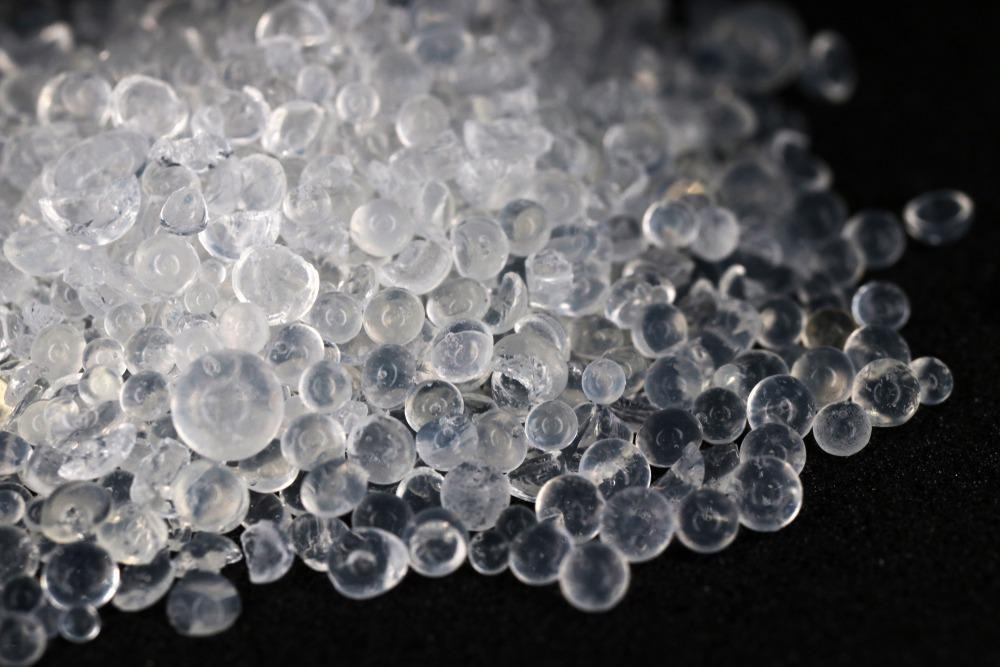A review has been published in the journal Polymers to provide an overview of current research into microalgal entrapment in silica hydrogels. The research has been carried out by researchers from Germany and has implications for areas such as biofuel, chemical, and food production.

Study: Silica Hydrogels as Entrapment Material for Microalgae. Image Credit: photowind/Shutterstock.com
The Growing Use of Microalgae in Research and Industry
Microalgae, a diverse group of marine and freshwater organisms, have been explored in recent decades for a variety of industries such as food production, industrial chemicals, and biofuel synthesis. High-value products such as pigments, vitamins, and polyunsaturated fatty acids are found in these organisms. They are widely considered to be a renewable feedstock to produce numerous important commercial products.
![Schematic presentation of hydrolysis and condensation of alkoxysilanes under acidic and alkaline conditions, modified from [58,60,61,63].](https://www.azom.com/images/news/ImageForNews_58685_16487249417495118.jpg)
Schematic presentation of hydrolysis and condensation of alkoxysilanes under acidic and alkaline conditions. Image Credit: Homburg, S.V & Patel, A.V, Polymers
Further advantages of using microalgae in industrial processes are their ability to sequester atmospheric carbon dioxide, cost, renewability, year-round production, and significantly reduced need for arable land. Attempts have been made since the 1940s to make use of these commercially important microorganisms. The first commercial success came in the late 1950s with the use of Spirulina and Chlorella as food supplements.
Thus far, the field of microalgal production is still a niche one, with limited knowledge on costs, competition with other more established processes, and a lack of technology suitable for commercialization hindering its commercial uptake. Due to slow growth rates, costly photobioreactors, costly media, high contamination risk, low cell densities, and challenging downstream processing, commercialization is incredibly difficult.
Immobilizing Microalgae – A Proposed Solution
One solution which has the potential to overcome the difficulties of using microalgae to produce valuable commercial products is to immobilize them. This process separates the cells from the liquid phase. By separating the cells in this way, the density of cell populations can be vastly increased, overcoming the issues of slow growth. Harvesting is simplified, and the separation of microbial biomass from the product overcomes issues with downstream processing costs.
Additionally, by immobilizing cells, recovery and recycling costs are reduced. This is due to the possibility of continuous processing in bioreactors at a higher dilution rate than the microalgal growth rate without the risk of cells being washed out. The process of immobilizing cells has been applied in areas such as energy production, metabolite production, and pollution removal. It is particularly advantageous for secreted products, where either wild or genetically modified microalgal strains can be used. Immobilizing cells protects them against contaminants and physical damage.
![Schematic representation of the reaction of tetra(n-propylamino)silane with water, modified from [68,70].](https://www.azom.com/images/news/ImageForNews_58685_16487249605914946.jpg)
Schematic representation of the reaction of tetra(n-propylamino)silane with water. Image Credit: Homburg, S.V & Patel, A.V, Polymers
Immobilization of microbes has been industrially exploited since the 1960s. Using this process for microalgae needs to take into account the requirement for photosynthesis by the organisms and their sensitivity. The first research on immobilizing microalgae was reported in 1966. Interest in its applications accelerated after 1980.
Immobilizing Microalgae in Silica Hydrogels
The study published in Polymers has provided a review on immobilization methods for microalgae production using silica hydrogels. Immobilization via entrapment provides enhanced protection against contamination, and several methods have been explored to facilitate entrapment including ionic gelation, coacervation, and thermal gelation. There are pros and cons to each entrapment method.
Entrapment processes commonly employ synthetic organic polymers or biopolymers, but there are issues with these materials. They can be easily degraded by the entrapped cells and contaminants. Inorganic silica hydrogels, on the other hand, possess better chemical, thermal, biological, and mechanical stability as well as high transparency. The sol-gel method is used to produce these inorganic hydrogels.
Successful entrapment of microbial cells in silica hydrogels was first reported in 1989. However, several challenges have hindered microalgal entrapment, including toxic by-products, problems with detrimental organic solvent concentrations, and using mineral acids and bases to adjust pH. Moreover, the hydrogel’s confines and stiffness have the potential to physically restrict cell proliferation.
![Schematic presentation of the polymeric, cluster, and colloidal gel formation, modified from [60,61,64].](https://www.azom.com/images/news/ImageForNews_58685_16487249752076225.jpg)
Schematic presentation of the polymeric, cluster, and colloidal gel formation. Image Credit: Homburg, S.V & Patel, A.V, Polymers
The review provides an overview of studied entrapment methods for microalgae in silica hydrogels. The authors have highlighted the chemical reactions behind the preparation of gels, comparing three different preparation routes. Silica hydrogel biocompatibility and its consequences are highlighted, and methods for increasing their biocompatibility have been discussed in depth. Additionally, the review has summarized the applied methods for microalgae entrapment reported in the current literature.
In conclusion, the authors have stated that silica hydrogels are promising materials for microalgae entrapment, but they are still limited by biocompatibility issues. This is caused by the release of by-products due to factors such as precursor hydrolysis and pH adjustment. Biocompatibility can be enhanced through proper precursor selection, acid or base choice, and the addition of other biopolymers.
The authors have identified future research avenues, including how the entrapped microalgal cells’ activity, proliferation, and viability is affected by sol and hydrogel synthesis and resulting structures. Including alternative organic or inorganic plasticizers to decrease hydrogel stiffness, improve resistance to abrasion, and enhance the entrapped cells’ growth capacity is another research possibility identified by the authors.
Further Reading
Homburg, S.V & Patel, A.V (2022) Silica Hydrogels as Entrapment Material for Microalgae [online] Polymers 14(7) 1391 | mdpi.com. Available at: https://www.mdpi.com/2073-4360/14/7/1391
Disclaimer: The views expressed here are those of the author expressed in their private capacity and do not necessarily represent the views of AZoM.com Limited T/A AZoNetwork the owner and operator of this website. This disclaimer forms part of the Terms and conditions of use of this website.